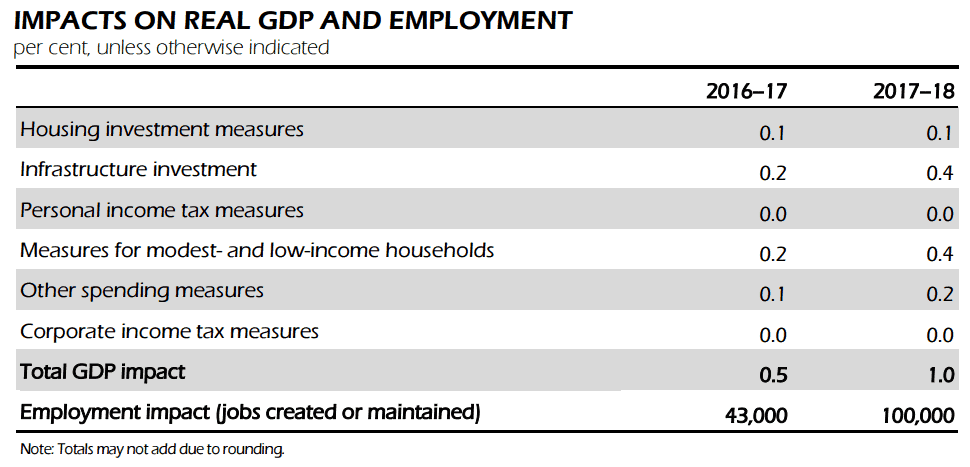Canada’s finance minister cornered the market on Reg ink for Budget 2016 Photo: Shutterstock
Canadian Finance Minister Bill Monreau is gleefully sailing into a sea of red ink, trolling for prosperity on a $118.7-billion-dollar fishing expedition. And it might work. The previous governments austere ways weren’t getting the job done, so why not try something different?
A key plank of this budget is infrastructure spending. The government announced plans to invest $120 billion in infrastructure over the next 10 years. The immediate plans call for spending $3.4 billion over three years to upgrade public transit systems, $5.0 billion over 5 years for investments in water, wastewater and green infrastructure projects and another $3.24 billion for social infrastructure. The budget also includes $5.6 billion in tax cuts although the largest benefit accrues to those with children under 18.
The Department of Finance estimates that the budget measures will raise the level of real GDP by 0.5% in 2016 and 1.0% in year 2017. The bump in GDP, although down the road, will provide the Canadian dollar with support, especially considering that just last month, the Organization for Economic Cooperation and Development (OECD) downgraded its global GDP outlook.
Source: Ministry of Finance/Budget 2016
Most of the budget had been pre-announced but it is still another check-mark in the “Bullish Canadian Dollar” side of the ledger. The other checkmarks include:
- Stable to firm oil prices. The Russia/Opec meeting scheduled for April 17 seems to have put a floor under WTI in the $36.00/b area and comments from the Opec Secretary General, that Iran may join producers to support prices at a later date, is keeping prices supported.
- Commodity prices, other than oil, have rebounded off their February lows which has also improved the sentiment for the Canadian dollar
- The steadily improving US economy is helping Canadian exports increase as evidenced by the big bump in Manufacturing exports to 2.3% in January.
- Consumers are spending as well. Retail Sales rebounded in January, more signs that the Canadian economy is showing signs of growth.
- The Fed is still very cautious. The FOMC statement was cautious enough to be seen as doveish which seems to rule out an imminent rate hike.
- The risk of a BoC interest rate cut has diminished or even disappeared due to the Federal stimulus program.
- USDCAD short term technicals are bearish while USDCAD trades below 1.3360 looking for a test of the Oct low of 1.2830 which if broken would extend losses to 1.2550.
- USDCAD speculative long positions have been substantially reduced but not eliminated.
The Bearish side of the ledger sees:
- Oil price gains may not be sustainable even if production is capped at current levels because a) it doesn’t do anything to curb the over-supply/low demand issue. b) US oil producers who have trimmed back production may ramp it up on higher prices, defeating the production cap. The American Petroleum Institute’s Weekly report on the change of Crude Oil Stocks showed a rise of 8.3 million barrels on Monday, evidence that oversupply is still an issue.
- USDCAD has plunged 0.1750 points from January to March, exceeding the entire annual ranges in place since 2010. It is not far from significant support in the 1.2800-1.2900 area and seems overdue for a bounce
- There have already been five Fed speakers this week and four of them suggested that a couple of rate hikes were possible this year. St Louis Fed president, James Bullard, a known hawk, even suggested that June was a possibility.
The mixed outlook for the Canadian dollar has created a massive headache for exporters while giving importers a new lease on life. The extreme volatility in USDCAD in the first 73 days of 2016 has created a major dilemma-to hedge or not to hedge.
Importers, or those needing to buy USDCAD are thanking their lucky stars for the 0.1650 plunge in USDCAD since the January 21 peak of 1.4688. (unless of course, they have already bought)
Let’s assume that ABC Importer needs to buy $1 million USDCAD to cover their requirements for the balance of 2016. If they had the bad luck to have executed the trade on January 21, they would have paid CAD$1,468,800. Today, they can buy that same amount of US dollars for CAD$1,305,000. That’s a difference of CAD$163,800 dollars. And it could really hurt. What do they do?
FX hedging is never a bad idea especially if volatile FX moves can have a material affect on your business as this year moves clearly demonstrate. A common strategy is to buy USDCAD forward contracts that lets the company lock in today’s rates for delivery on a future date.
For example, if ABC importer knows it needs to buy $500,000 in June and $500,00 in November but also thinks that USDCASD may fall even further, they can purchase $250,000 USDCAD for delivery in June and $250,000 for delivery in November (or any date of their choosing) at very close to the current rates. This way, the company is 50% hedged against adverse moves in the currency while enjoying 50% participation in favourable moves. There are two key caveats. A forward contract is in fact a legal binding contract, obligating the buyer, in this case ABC Importer, to purchase $250,000 USDCAD at the agreed upon price on the agreed upon delivery. In most cases there is a requirement for the buyer of the forward contract to post a “margin” in the area of 3-10% of the US dollar value of the contract. It is not a cost but merely a partial pre-delivery on the Canadian dollar proceeds that are due at maturity.
Exporters have a different dilemma. If they didn’t sell their 2016 USDCAD requirements in January near the peak, what do they do now? Do they hedge a current levels and risk missing the boat if USDCAD corrects?
They could also enter into a series of forward contracts to sell USDCAD for delivery at a later date and thereby lock up today’s price. But after a nearly unprecedented 0.1650-point plunge, is it wise? These exporters can wait for the “proverbial better levels” or consider buying a USD put/CAD Call option to protect the downside.
There is no simple solution either for US dollar buyers or sellers as every company’s risk tolerance, market view, and cash flow visibility are different. Your Agility Forex advisor will work with you to help determine the best approach for your company’s needs.
The Federal Finance Minister may be sailing in a sea of red ink, but that red ink is a moderately positive for the Canadian dollar on anticipation of a boost in consumer and government spending elevating GDP. Unfortunately, those effects won’t be seen immediately. Although the 0.1650 plunge in USDCAD screams for a correction, upticks have been shallow raising the risk for additional USDCAD strength to test long term support in the 1.2750-1.2800 area as long as USDCAD trades below 1.3340.







